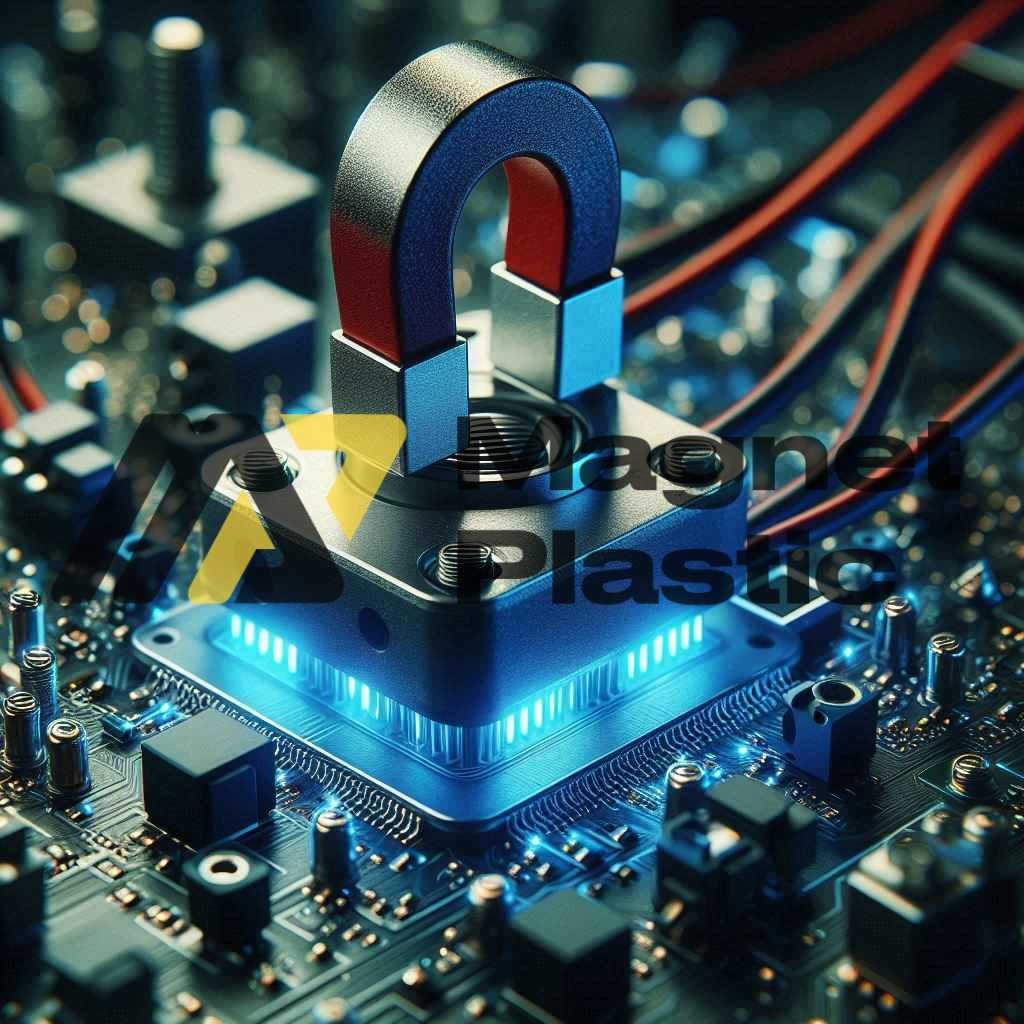Magnets in Industrial Sensors: Control and Monitoring
Magnets in industrial sensors have revolutionized control and monitoring in industrial environments. These devices use magnetic fields generated by magnets to perform non-contact measurements, ensuring accuracy and efficiency in key processes. Their ability to operate without physical friction, along with their durability, makes them a reliable choice for a wide range of applications, from manufacturing to advanced automation.
How do industrial magnetic sensors work?
Magnetic sensors detect changes in a magnetic field caused by the proximity of metallic or conductive objects. This is achieved by using permanent magnets that interact with said objects, allowing the sensor to record movements, positions, speeds, among others. The most common are Hall effect sensors, magnetoresistive sensors, and reed sensors, each with specific industrial applications.
These sensors have varied applications in sectors such as automotive, aerospace, manufacturing, and electronics, among others. They are vital to ensure that control and monitoring processes operate accurately and without interruptions, reinforcing the importance of magnets in industrial sensors.
Key Applications of Magnetic Sensors
The use of magnets in industrial sensors extends to numerous processes that require precision, control, and constant monitoring. Some of the most common applications include:
- Position Monitoring
One of the most common uses of magnetic sensors is in monitoring the position of key components in industrial machinery, such as pistons, valves, or shafts. Because they do not need direct contact with the parts they monitor, they are ideal for environments with harsh conditions, such as extreme temperatures or corrosive environments. For example, in automotive assembly lines, magnetic position sensors ensure that components are assembled in the exact position, which is essential for process efficiency and accuracy.
- Speed Measurement
Another fundamental application of magnetic sensors is speed detection in electric motor systems and rotating machinery. Magnets, placed on moving parts, interact with the sensors to measure rotational speed in real time. This information is crucial for motor control and monitoring in factories and other industrial facilities, where failures or overloads can be costly or dangerous. Sensors automatically adjust systems if they detect variations in operating speeds.
- Flow control in hydraulic and pneumatic systems
In industry, precise control of fluids and gases is essential. Magnets in industrial sensors are used in hydraulic and pneumatic systems to monitor the position of valves, ensuring they open and close correctly to maintain optimal flow. This is especially important in sectors such as chemicals or food, where uncontrolled flow can compromise product safety and quality.
- Proximity sensors
Magnetic proximity sensors detect the presence of objects without the need for physical contact, which is ideal for automated processes. These sensors, which use magnets, are installed in production systems to detect the presence of parts along the production line. This allows for precise control and monitoring, reducing errors and improving manufacturing efficiency.
Benefits of Magnetic Sensors in Industry
Using magnets in industrial sensors presents numerous benefits, starting with their high reliability. These sensors are very durable, as they have no moving parts to wear out. This significantly reduces maintenance and extends the life of the equipment, resulting in lower long-term cost. Additionally, they are resistant to harsh environmental conditions, such as dust, humidity, or extreme temperatures, making them suitable for almost any industrial environment.
Another benefit is the accuracy of these sensors. Minimal changes in the magnetic field can be detected with high accuracy, which is essential for industrial processes that require precise measurements to ensure product quality and system safety.
Conclusion
In summary, magnets in industrial sensors are an essential technology for efficient control and monitoring in a wide range of industrial applications. Their ability to operate without physical contact, coupled with their durability and accuracy, makes them ideal for industrial sectors looking to improve productivity and safety. As industries continue to evolve and adopt new technologies, the use of magnetic sensors will continue to be an integral part of industrial processes integral to progress and efficiency in industrial automation.
